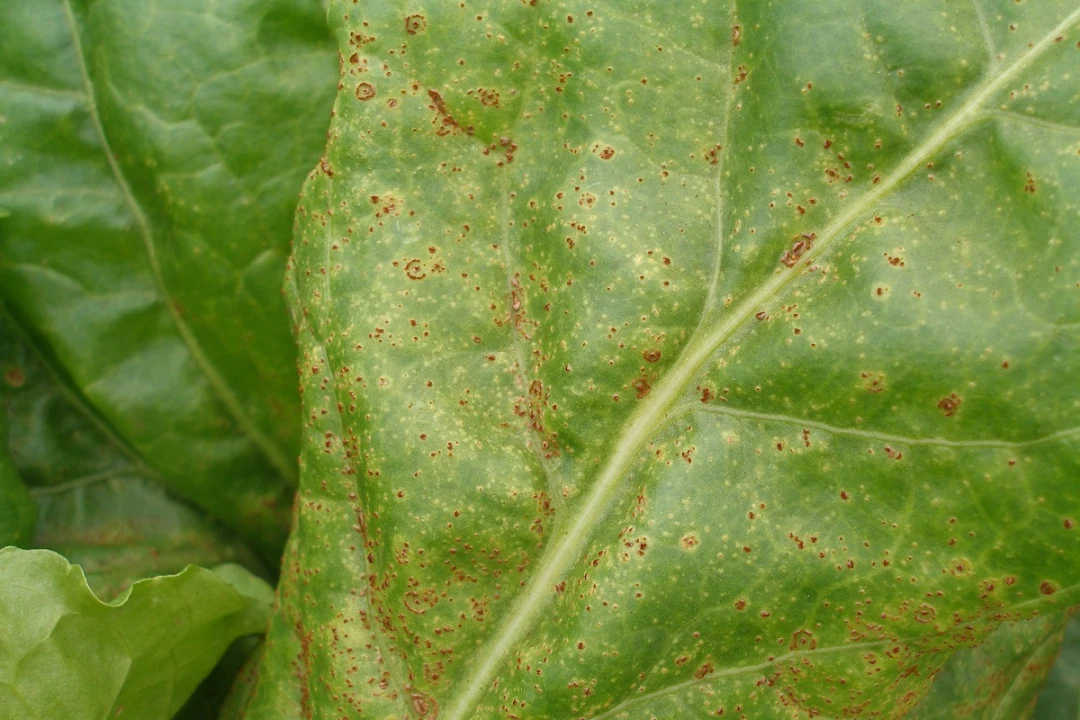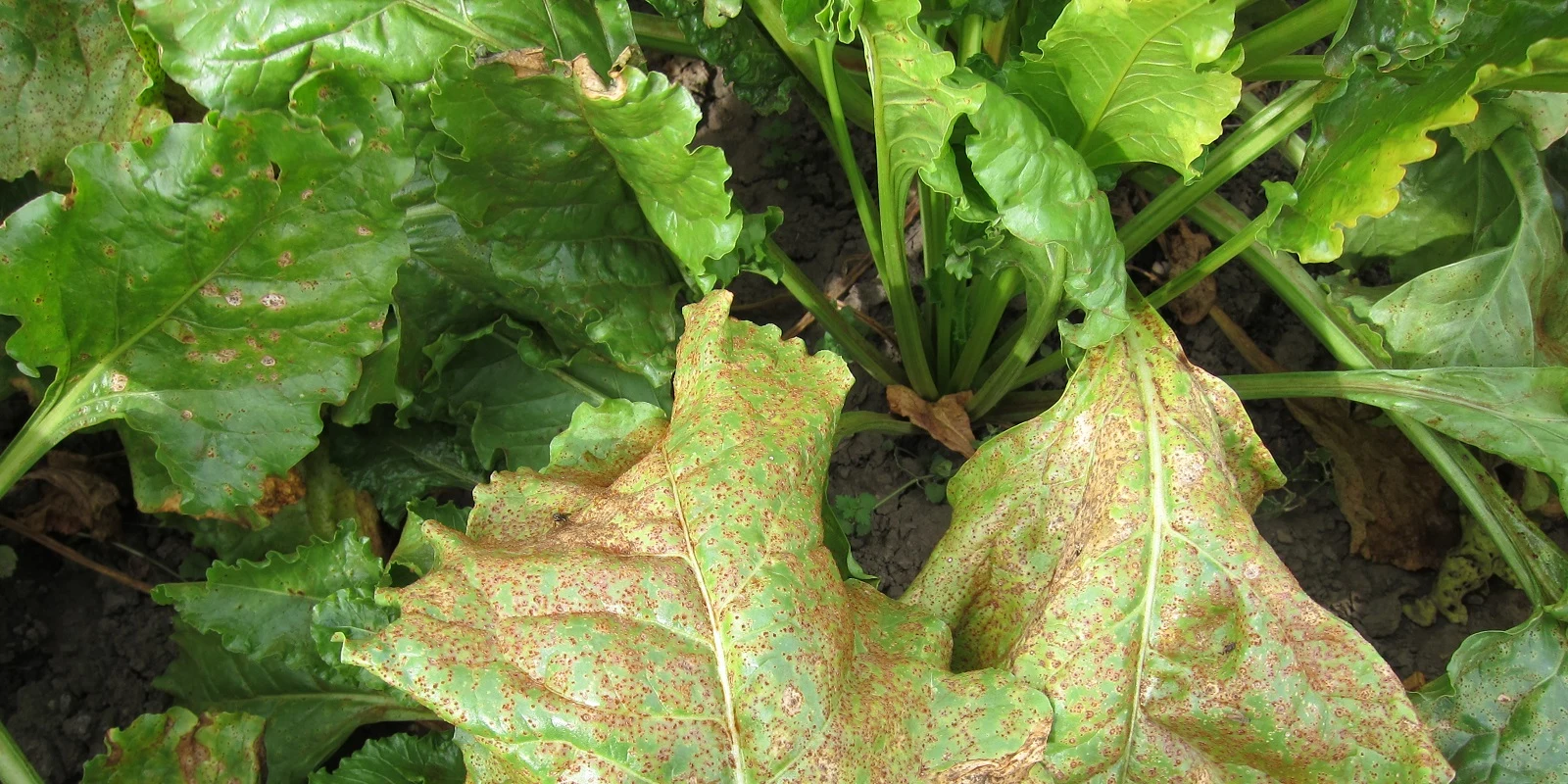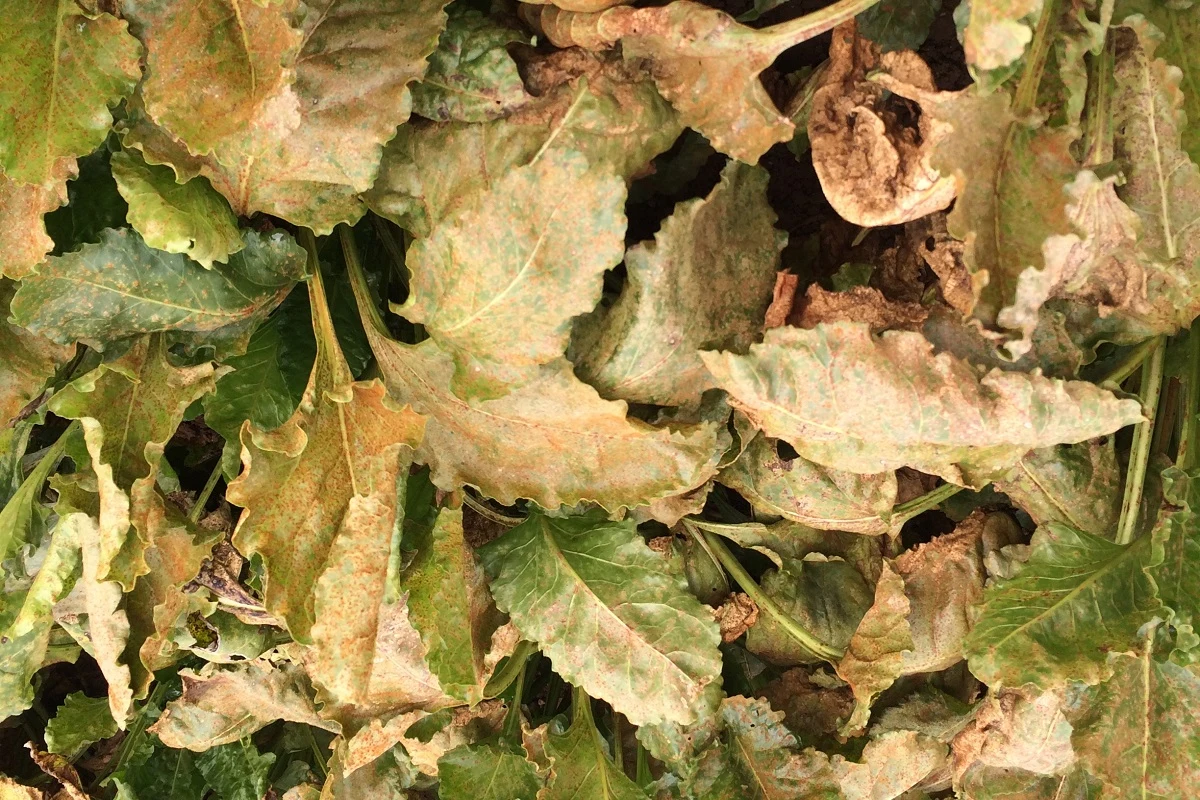
Rust - Beet
Initial infection, more advanced disease pressure (Photo R Bradbury)

Initial infection, more advanced disease pressure (Photo R Bradbury)
Fungus
Sugar Beet
Appears on both sides of the leaves as small (1 – 2 mm diameter) raised pustules that are re-orange or brown in colour. When disease pressure is severe, spores will brush off onto animals, machinery and clothing of people passing through the crop.
In the UK rust usually develops in late August and Early September but can continue to spread into early autumn. It produces spores at the end of summer which overwinter on dead leaf tissue, crowns or wild beet.
Favourable Factors
Disease spreads during periods of moist weather when temperatures are between 15 and 20C and is most intense when dew persists for long periods. Development of the disease is halted by warm, dry weather leaving yellow sunken spots on the leaves. Frosts can cause greater plant damage when foliage is covered in rust.
Yield reductions are lower than for powdery mildew, usually in the region of 2 – 5 %. However severe disease pressure in mid to late August have been shown to reduce yields by 10 % or more.
Avoid more susceptible varieties as documented on the Recommended List
Foliar fungicides should be applied at disease onset (usually late July - Early August) and if lifting beet beyond October a second application should be made 3-4 weeks later.




